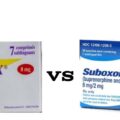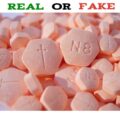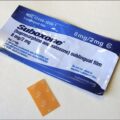Suboxone, a combination medication containing buprenorphine and naloxone, is one of the main medications used for medication-assisted therapy (MAT) for opiate addiction. Use of MATs has been shown to lower the risk of fatal overdoses by approximately 50%. Suboxone works by tightly binding to the same receptors in the brain as other opiates, such as heroin, morphine, and oxycodone. By doing so, it blunts intoxication with these other drugs, it prevents cravings, and it allows many people to transition back from a life of addiction to a life of relative normalcy and safety.
A key goal of many advocates is to make access to Suboxone much more widely available, so that people who are addicted to opiates can readily access it. Good places to start are in the emergency department and in the primary care doctor’s office. More doctors need to become “waivered” to prescribe this medication, which requires some training and a special license. The vast majority of physicians, addiction experts, and advocates agree: Suboxone saves lives.
Suboxone side effects
Get emergency medical help if you have signs of an allergic reaction to Suboxone: hives; difficult breathing; swelling of your face, lips, tongue, or throat. Like other narcotic medicines, Suboxone can slow your breathing. Death may occur if breathing becomes too weak. A person caring for you should seek emergency medical attention if you have slow breathing with long pauses, blue colored lips, or if you are hard to wake up.
Call your doctor at once or seek emergency medical attention if you have:
- weak or shallow breathing, breathing that stops during sleep;
- a light-headed feeling, like you might pass out;
- confusion, loss of coordination, extreme weakness;
- blurred vision, slurred speech;
- liver problems – upper stomach pain, loss of appetite, dark urine, clay-colored stools, jaundice (yellowing of the skin or eyes);
- low cortisol levels – nausea, vomiting, loss of appetite, dizziness, worsening tiredness or weakness; or
- opioid withdrawal symptoms – shivering, goose bumps, increased sweating, feeling hot or cold, runny nose, watery eyes, diarrhea, muscle pain.
Seek medical attention right away if you have symptoms of serotonin syndrome, such as: agitation, hallucinations, fever, sweating, shivering, fast heart rate, muscle stiffness, twitching, loss of coordination, nausea, vomiting, or diarrhea.
How To Get Rid Of Nausea From Suboxone
One of the commonly reported side effects of Suboxone is nausea. In addition, some people become attached to the relaxation Suboxone can cause, and that can lead to addiction and/or drug relapse. There are several ways to control or relieve nausea; however, if these techniques do not seem to ease the queasiness, talk to your doctor.
When trying to control nausea:
- Drink clear or ice-cold drinks.
- Eat light, bland foods (such as saltine crackers or plain bread).
- Avoid fried, greasy, or sweet foods.
- Eat slowly and eat smaller, more frequent meals.
- Do not mix hot and cold foods.
- Drink beverages slowly.
- Avoid activity after eating.
- Avoid brushing your teeth after eating.
- Choose foods from all the food groups as you can tolerate them to get adequate nutrition.
SEE: How Long Does Suboxone Strips Stay In Your System






